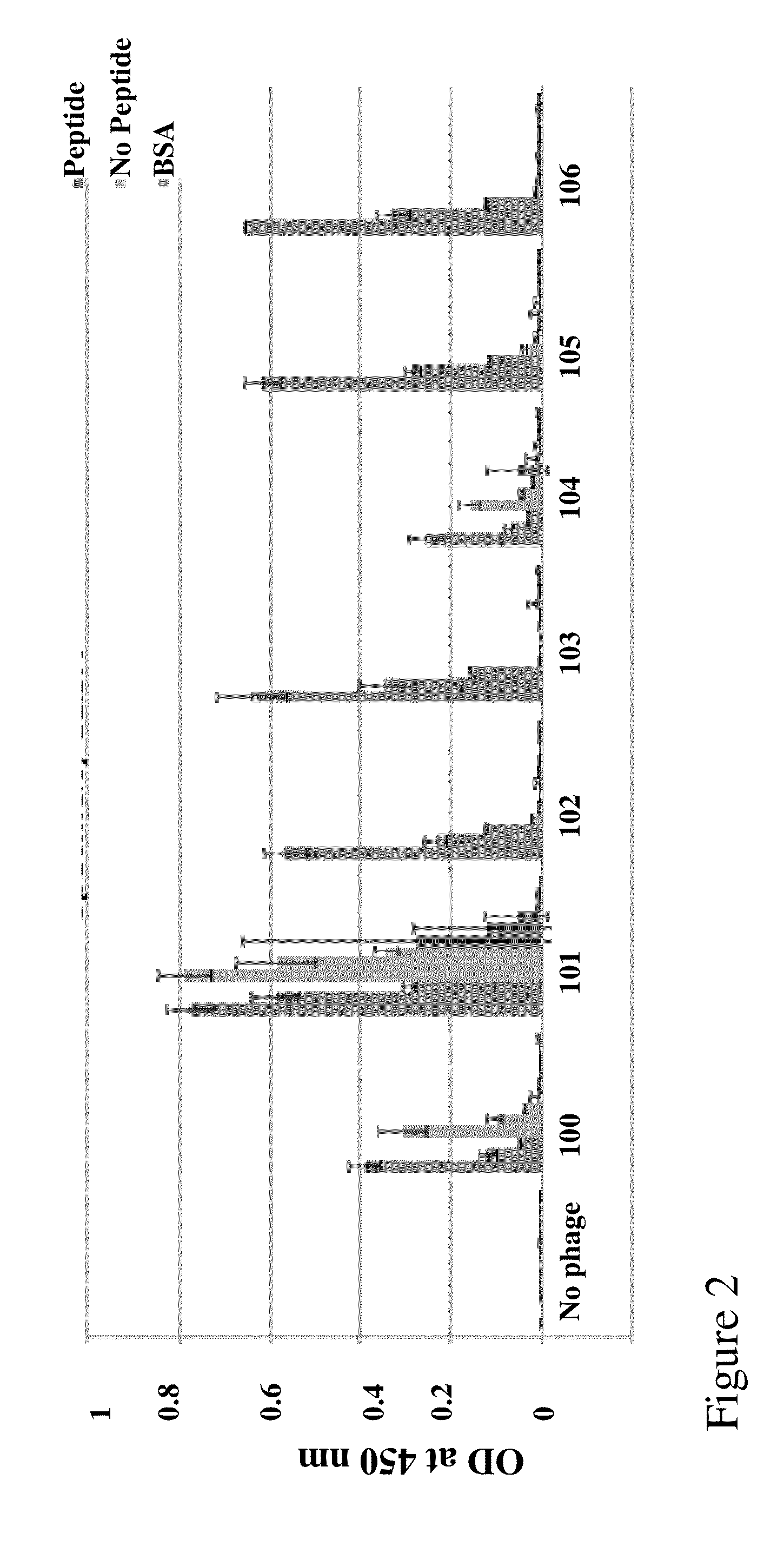Biologic female contraceptives
a technology of biological and female contraception, applied in the field of women's organisms, can solve the problems of no problem, no problem, no indication of proneoplasticity, etc., and achieve the effects of reducing the incidence of pregnancy
- Summary
- Abstract
- Description
- Claims
- Application Information
AI Technical Summary
Benefits of technology
Problems solved by technology
Method used
Image
Examples
example 1
Preparation of Anti-Human Sperm Antibodies
[0106]Monoclonal antibodies are prepared against human sperm antigens by fusing P3-X63-Ag8-653 mouse myeloma cells with lymphocytes from Balb / c mice immunized with Tergitol NP-40 detergent-solubilized human epididymal sperm. Ascites fluid from mice injected with these hybridomas is tested for being acrosome positive on methanol fixed sperm and plasma membrane positive on unfixed sperm in indirect immunofluorescence. Antibody cross-reactivity with murine and rabbit sperm is verified.
[0107]A fertilization antigen, FA-1, is purified from either deoxycholate- or lithium diiodosalicylate-solubilized murine testes by immunoaffinity chromatography using a monoclonal antibody, MA-24, as described (Naz, R. K. et al., Proc Natl Acad Sci USA. (1986) 83(15):5713-7). Additional monoclonal antibodies to FA-1 are prepared as above, and cross-reactivity with human and rabbit sperm is verified as well.
example 2
Cloning of Anti-Human Sperm Antibodies
[0108]RNA Preparation:
[0109]Hybridoma cells secreting antibodies which are spermicidal or diminished spermatid motility are selected. The cells are grown and counted such that 10 million cells are processed for RNA collection utilizing the FastTrack 2.0 kit (Invitrogen). Total RNA is directly isolated from the cells using a detergent lysis and protein degradation buffer. Poly(A)+RNA is then isolated using a modified Aviv and Leder protocol in which the mRNA is bound to oligo dT resin. The resin is then washed with a low salt buffer to remove extraneous total RNA, and the poly(A)+RNA is eluted from the resin. Spectrophotometric analysis at 260 nm and 280 nm indicates the final concentration of poly(A)+RNA.
[0110]Reverse Transcription and Amplification of Poly(A)+RNA
[0111]The epitope-recognizing regions or complimentary determining regions (CDRs) of the antibody are identified and oligonucleotides probing Ig heavy chain and light (kappa) chain subu...
example 3
Generation of a Series of Anti-Sperm scFv
[0131]Library Construction
[0132]A human scFv filamentous phage display library for isolating human VH-VL tethered variable domians against the sperm proteins was utilized. The human scFv library was prepared using primers designed according to the sequences obtained at V Base (http: / / vbase.mrc-cpe.cam.ac.uk) and according to techniques described previously by Barbas & Lerner (Barbas, Bain et al. 1992 Proc Natl Acad Sci USA 89(10): 4457-61; Gram, Marconi et al. 1992 Proc Natl Acad Sci USA 89(8): 3576-80; Zebedee, Barbas et al. 1992 Proc Natl Acad Sci USA 89(8): 3175-9; Barbas, Amberg et al. 1993 Gene 137(1): 57-62), Winter (Hawkins, Russell et al. 1992 J Mol Biol 226(3): 889-96; Hawkins and Winter 1992 Eur J Immunol 22(3): 867-70; Hoogenboom, Marks et al. 1992 Immunol Rev 130: 41-68; Hoogenboom and Winter 1992 Immunol Rev 130: 41-68; Marks, Griffiths et al. 1992 Biotechnology (N Y) 10(7): 779-83; Marks, Hoogenboom et al. 1992 J Biol Chem 267(2...
PUM
| Property | Measurement | Unit |
|---|---|---|
| pH | aaaaa | aaaaa |
| concentration | aaaaa | aaaaa |
| temperature | aaaaa | aaaaa |
Abstract
Description
Claims
Application Information
 Login to View More
Login to View More - R&D
- Intellectual Property
- Life Sciences
- Materials
- Tech Scout
- Unparalleled Data Quality
- Higher Quality Content
- 60% Fewer Hallucinations
Browse by: Latest US Patents, China's latest patents, Technical Efficacy Thesaurus, Application Domain, Technology Topic, Popular Technical Reports.
© 2025 PatSnap. All rights reserved.Legal|Privacy policy|Modern Slavery Act Transparency Statement|Sitemap|About US| Contact US: help@patsnap.com



